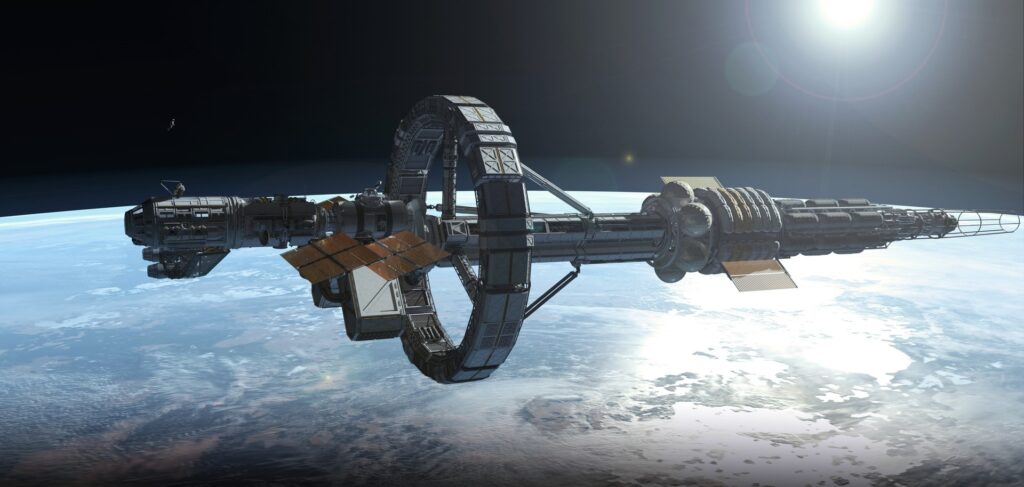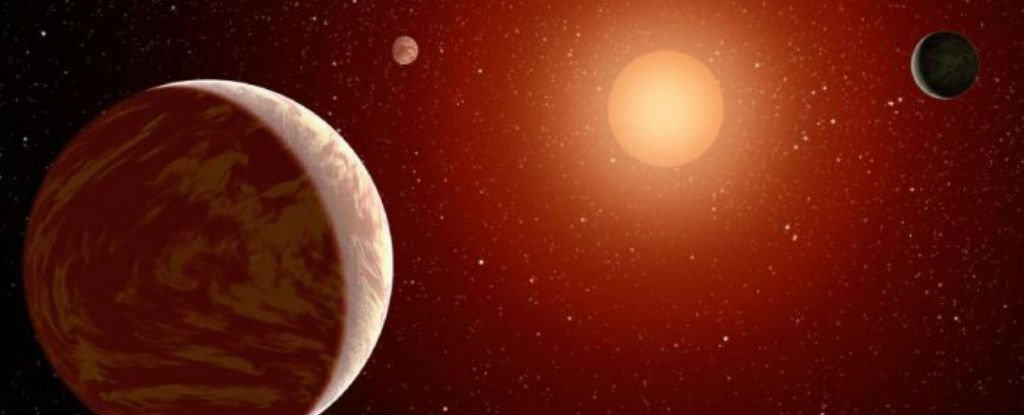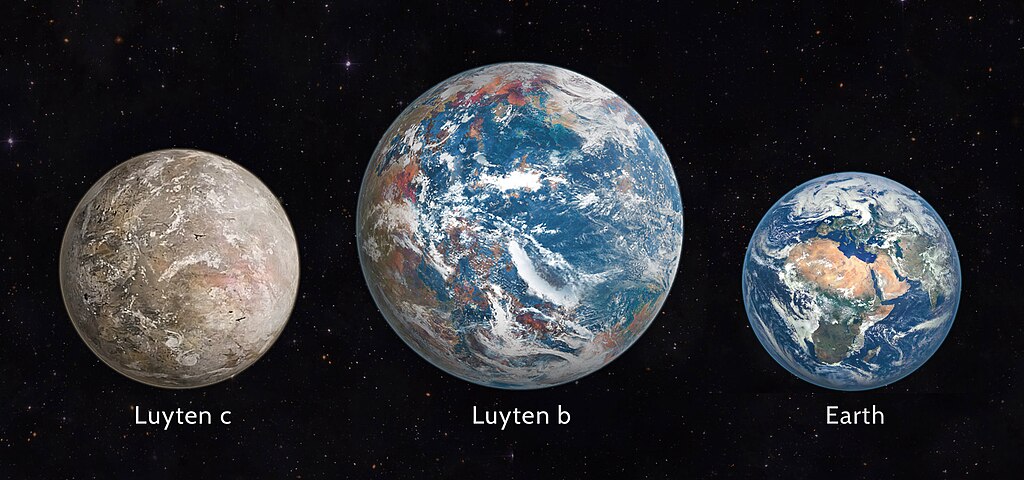Though we know of a few thousand exoplanets, a good number of them are not suitable for human habitation. Moreover, we won’t even be able to land there. Not to mention that the majority of them are so far removed from us, it would take thousands of years to reach them — unless we find a way to defy the theory of relativity. Even so, we did manage to find six planets that could be worth our attention as potential settlements.

Exoplanets Within Our Reach
As of October 2024, scientists have confirmed the existence of 5765 exoplanets in 4304 star systems. Even more are awaiting confirmation. Their number could indeed be incredibly high, which begs the question: is there a planet among them that we could travel to and eventually inhabit, just like we do Earth?
Modern science is unaware of any celestial body that resembles Earth enough for us to be considered habitable without the aid of space suits. That said, there are a number of planets with environmental conditions that are somewhat similar to what we are used to.
Such scarcity is explained by the fact that many known exoplanets are giants of gas and ice, completely lacking in solid surface. Another good portion of Earth-like planets orbit too close to their stars, which either turns their surface into boiling rivers of molten rock or heats their atmosphere to the unbearable degree. It would destroy anything that enters it for even a short period of time.

This leaves only a handful of suitable worlds with conditions ranging from Mercury-like lack of atmosphere to icy deserts akin to Pluto’s. In theory, it’s only these objects that would make any long-term human presence possible. If we want to land in any foreign star system, these are the only planets we can count on.
But that’s not all. Many such planets are dozens, if not hundreds or thousands light years away. According to the theory of relativity, no object can travel faster than photons or even come close to reaching their speed of 300,000 kilometers per second. After all, when an object nears this speed, the energy required to sustain such acceleration per 1 kilogram of mass increases exponentially and, at some point, borders on infinity.
Of course, nothing stops us from fantasizing about light speed travel. These hypothetical abilities could propel us to the most distant stars relatively fast, as far as human lifespan is concerned. But it’s important to remember that modern physics construes these ideas as fantasy; while science doesn’t outright prohibit their existence, it also can’t promise they will ever become the stuff of reality.

How Fast Can Spaceships Travel?
When it comes to planning an interstellar journey to potential exoplanets, the main focus falls on the speed that a human-carrying spacecraft can feasibly reach. These numbers are speculative, considering that we had no success in accelerating spacecraft to more than a few dozen miles per second. At these speeds, it would take us thousands of years to reach the closest exoplanets. Not only would it be difficult for humans to survive in space for such an extended period of time, but most of our equipment will also likely malfunction long before arrival.
However, physics does theoretically allow for faster spacecraft speeds than we can currently reach. All we need to do is learn how to accelerate and drop speed more effectively. So what kind of speeds could be available to us on a practical level? Again, it’s hard to say for certain. But there are two options we can use within this framework: 1% and 10% of the speed of light, or 3,000 km/s and 30,000 km/s respectively. Using them as a reference point, we could theorize which known exoplanets could be worth a lengthy interstellar journey.

Proxima Centauri b
Our first candidate, Proxima Centauri b, is naturally the closest planet to Earth. It orbits a red dwarf which, in turn, revolves around the binary system of Alpha Centauri A and Alpha Centauri B. If a spaceship travels at 1/100th light speed, it will reach its destination in 424 years. At 1/10th light speed, it will only take 42 years. During the journey, the people on board could hibernate in cryosleep, though it would still take a few generations for us to arrive. These two speeds are incredibly difficult to achieve with our current scientific development, but we could theoretically master it.
When the future astronauts arrive at Proxima b, they will likely see a planet very similar to Earth. It’s 7% more massive than Earth and its radius, although still unknown, shouldn’t exceed Earth by more than 40%. If we assume that its density is roughly the same as Earth’s, then the planet’s gravity will only be 5% stronger than what we are used to.

Proxima Centauri b is a cold world. It only receives about 65% of the energy that Earth does from the Sun, resulting in surface temperatures of -39 °C (or -38.2°F), so most of its oceans are covered in ice. It’s very likely the planet lacks flowing water.
But this isn’t the key factor that shapes the planet’s drastic climate. It takes Proxima Centauri 11.18 Earth days to complete its orbit, and the duration of its day is also approximately the same length. This is referred to as tidal capture, which occurs when a faces only one side toward its star.
It’s impossible to say for certain what our closest neighbor looks like. We don’t know how powerful its atmosphere and hydrosphere are, or whether the length of its year and day is an equal 1:1 ratio. By using these values in digital modeling, we get a wide range of possible outcomes: Proxima Centauri b could be anything from a frozen tundra incompatible with human life, to a somewhat chilly and extreme ocean world.

Barnard b
The second exoplanet worth exploring is Barnard’s Star b that orbits an old red dwarf in Ophiuchus, a constellation so faint it’s impossible to see with the naked eye. At 1/100th light speed, it would take our spacecraft 596 years to reach the planet, though only 60 years if we travel at 1/10th light speed.
As for the planet itself, we don’t really know much about it. It has 37% of Earth’s mass and completes its orbit in 3 days. This points to the likely conclusion that Barnard b is a lifeless world whose atmosphere is either very thin or entirely nonexistent, similar to Mars or Mercury.
Tidal capture is also likely at play here. This means that the planet’s sunlit side heats up to such a degree we could only spend a short amount of time on its surface, even in space suits. The night side, on the other hand, could be suitable for building a base. Of course, any quality of life on Barnard would be a far cry from Earthly standards, but it doesn’t negate the fact that this exoplanet is theoretically reachable and walkable. It’s possible that it’s not the only planet in its system, and there are other worlds that could prove to be more livable.

Ross 128 b
Another planet orbiting a nearby red dwarf, albeit also invisible to the naked eye, is Ross 128 b. Getting there at 1/100th light speed will take us 1100 years, while 1/10th light speed will shave it down to 110 years.
The planet itself is 40% heavier than Earth, with a 60% larger radius. Due to its lower density, the Ross’ gravity is only 12% stronger than what we have on Earth. There are a few estimates as for the surface temperature based on the planet’s albedo, ranging between -60 °C (-76 °F) and 21 °C (89.6 °F), so more or less pretty Earthly temperatures.
Like all previous examples, due to tidal capture, the planet always faces its star with one side. But does it have a strong atmosphere and hydrosphere? At least, that’s what its high density suggests. Which might cause a number of other problems. Plus, the planet’s eccentricity of 0.21 could mean there’s still hope for us: at least some parts of it could experience a regular rotation of day and night due to libration.
On the other hand, if the planet contains vast amounts of water, it could mean that its surface is entirely oceanic and its poles locked in ice. Should we ever get there, we might have to do all our exploration underwater. Any potential settlements will have to either float on the surface or be built on the ocean floor.
GJ 1061 с and d
The next two candidates for our interstellar settler mission are located in the GJ 1061 system. For this one, the journey will take 1198 years at 1/100th light speed, while 1/10th light speed will get us there in just 120 years.
Though this system has been confirmed to contain three Super-Earths, planet b is too close to its star, so its living conditions are about as hospitable as Venus. As for planet c, it completes its orbit around the star in 6.7 Earth days, and the duration of its day is pretty much the same length due to tidal capture.
If planet c has an Earth-like atmosphere, then average temperature on its surface should reach about 35 °C (95 °F), so slightly hotter than our planet. But considering that planet c is 75% more massive than Earth, its outer gaseous layer should be denser and the greenhouse effect more pronounced. So, even if it has an oxygen-containing atmosphere, we wouldn’t be able to visit it without space suits.

As for the gravity, it’s difficult to make an accurate estimate, considering we don’t have the values for the planet’s radius. All we can say is that if it’s sufficiently light and has enough water or other lightweight matter, its gravity will be closer to that on Earth.
Planet GJ 1061 d is even farther removed from the red dwarf. Given that it takes the planet 13 Earth days to complete its orbit — which is noticeably elongated with a possible eccentricity of 0.53 — it would be fair to suggest for the planet’s day and year to have the ratio of 3:2 rather than 1:1. So it likely alternates between day and night.
GJ 1061 is 64% more massive than Earth. We don’t know its radius, so naturally we can’t guess its gravitational parameters. However, we know it likely gets 40% less energy from its star compared to us. If it has the same atmosphere as our planet, its average temperature should reach -10 °C (14 °F), making it a much colder world than ours. But it’s entirely possible that this planet experiences a more significant greenhouse effect, which could shift its environment closer to the one familiar to us.
Luyten b
Luyten’s Star, also known as GJ 273 or Gliese 273b, is yet another tiny red dwarf, though this one is located in the Canis Minor constellation. At 1/100th light speed, the journey there will take 1235 years, whereas 1/10th speed will bring the journey to a shorter 124 years. At present, we know of two planets that orbit the star, while another two are yet unconfirmed.

Luyten b is the second planet closest planet to its system’s star. It orbits the red dwarf every 18.64 Earth days and receives 20% more energy than Earth. But as we know nothing of its albedo, we can’t say for sure whether the planet’s average surface temperature is higher or lower than that of Earth.
So-called Super-Earths, which are considerably more massive than our planet, are still very much an open question. Some believe that these objects are likely to have powerful atmospheres and hydrospheres, so it’s very possible for Luyten b to be an ocean-covered planet obscured by permanent clouds.


